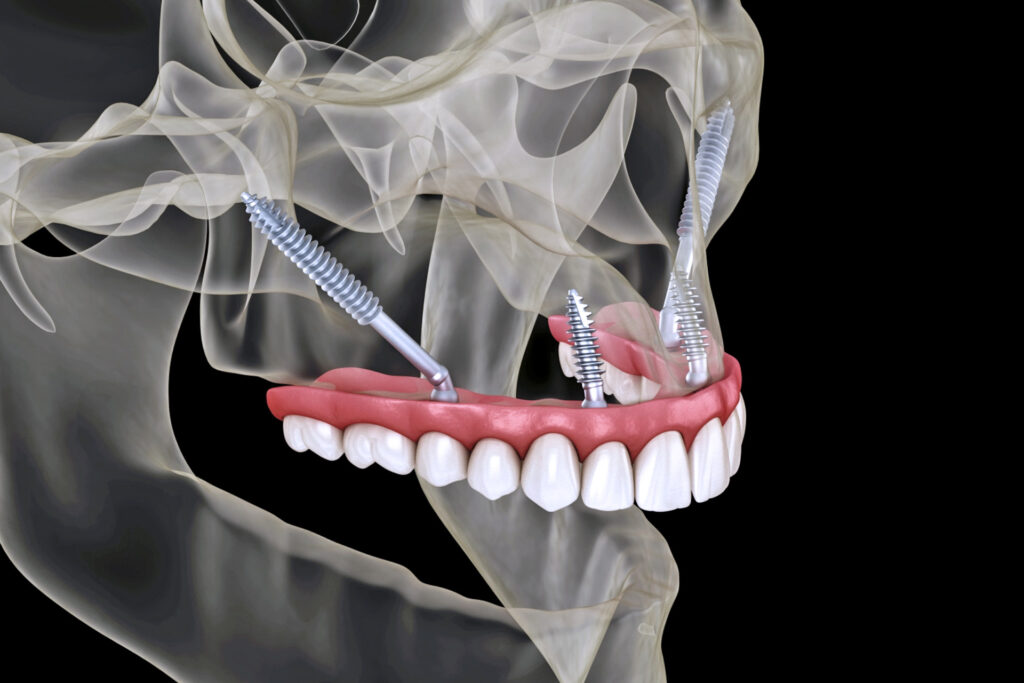
Zygoma implant is a treatment performed by taking support from the cheekbones, also known as zygoma bones, when the bone tissue in the patient’s upper jaw is not suitable for classic implant treatment.
Some patients who are afraid of the implant treatment process prefer removable dentures. Unstable removable prostheses can be uncomfortable in speaking, swallowing, chewing or social life. In addition, the aesthetic appearance is not preferred by most patients because it disrupts the natural appearance.
If natural teeth are damaged due to tooth and gum diseases, trauma or other reasons and cannot be treated, implant treatment is generally preferred. Implants are artificial tooth roots that are placed on missing natural tooth roots. It is applied to patients who have completed jawbone development. The success of the implant depends on the general health status of the patient, the suitability of the bone and gum tissues and the patient’s compliance with the dentist’s recommendations after the treatment.
If the bone tissue is not strong enough to be implanted, bone grafting is applied. However, when adequate fixation support cannot be provided due to the more dramatic bone tissues in the upper jaw, a zygomatic implant is applied instead of a normal implant. Especially implant treatments applied to the upper jaw are more difficult than the lower jaw due to the anatomical structure. Zygomatic implant treatment is performed under general anesthesia by oral and maxillofacial surgeons and dentists specialized in this field.
Depending on the patient’s condition, zygoma implants are placed by the specialist oral and maxillofacial surgeon and dentist, one or two from each side of the upper jaw at a 45-degree angle extending to the zygoma bones. A dental bridge or full denture is fixed to the zygoma implants according to the treatment to be applied.
Classic implant treatment is carried out in two sessions, including the placement of implants and temporary crowns, followed by gum healing and permanent crown placement. If the bone tissue is insufficient, the treatment time may be longer due to bone grafting. It can be applied to the upper and lower jaw. Implant screws are short.
Zygoma implant treatment does not require bone grafting and is performed in a single session. The patient has a healthy oral structure, aesthetic and beautiful smile on the same day. It can only be applied to the upper jaw. Since the implant screws are fixed to the zygoma bones, they can be five times longer than normal implant screws. Since the treatment involves fewer processes, treatment costs are lower than with a normal implant.
In both treatments, implants are long-lasting if the patient pays attention to oral hygiene and the care procedures recommended by the dentist. After implant treatments, smoking and alcohol consumption increases the risk of infection and slows down the healing process. In addition, smoking will weaken bone tissues and negatively affect implant success. Oral irrigator should be used according to the dentist’s recommendation in patients with implant treatment.





